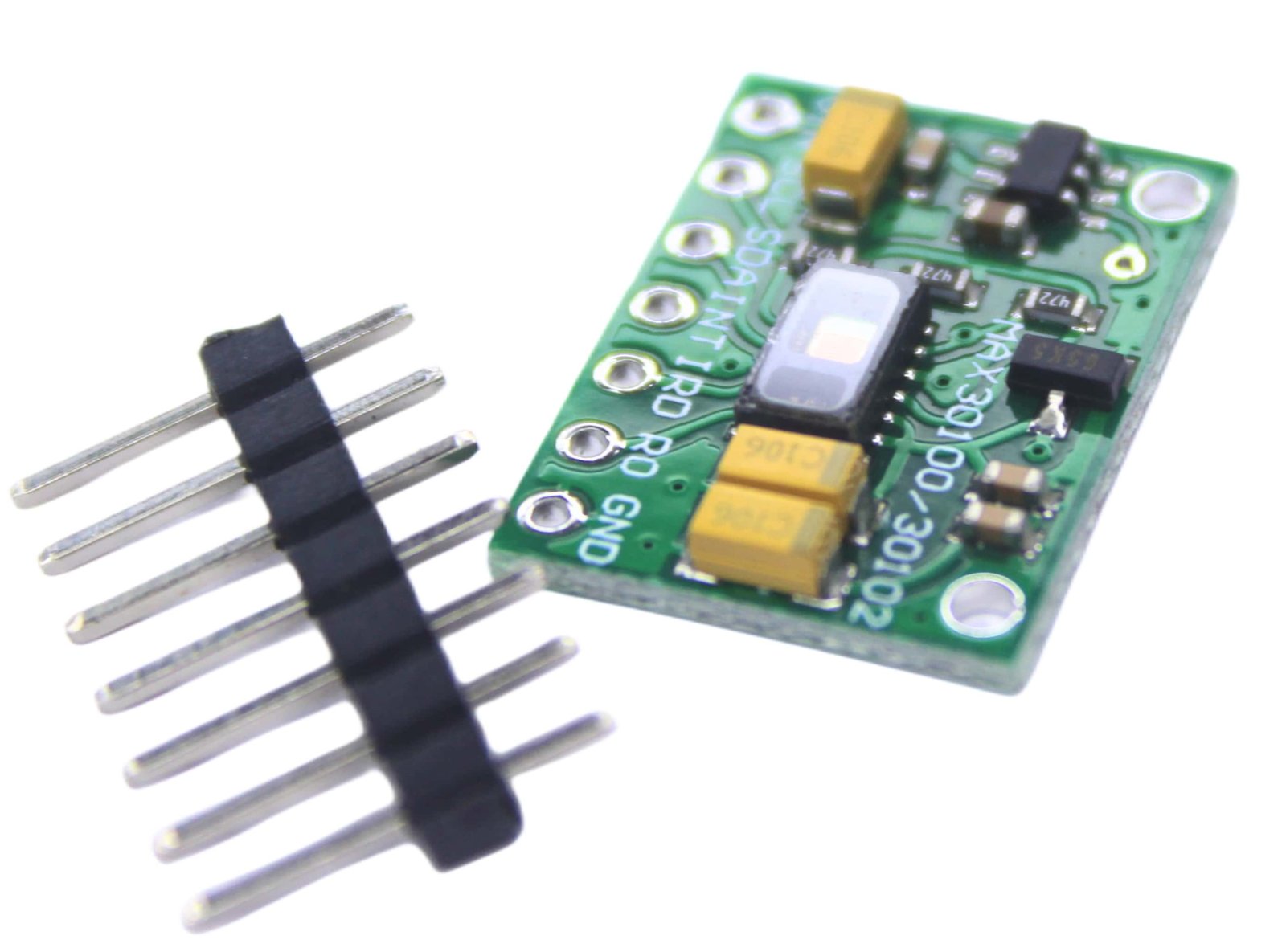Product Description (Detailed):
Unlock advanced personal health monitoring with the MAX30100 Pulse Oximeter Heart Rate Sensor Module, a compact and highly integrated solution for accurate SpO2 and BPM monitoring. This sophisticated sensor operates on the principle of photoplethysmography (PPG), utilizing two integrated LEDs—a red LED (660nm) and an infrared (IR) LED (880nm)—to emit light through the skin, typically the fingertip. A sensitive photodetector then measures the light absorption by pulsating blood, allowing for precise calculation of blood oxygen saturation (SpO2) levels and heart rate (BPM). The MAX30100 features a low-noise analog front-end (AFE) and ambient light cancellation (ALC), ensuring robust performance even in challenging environments. Communication with microcontrollers like Arduino and Raspberry Pi is seamless via the I2C communication protocol, simplifying integration into custom wearable health devices and DIY health monitoring systems. With ultra-low-power operation (1.8V and 3.3V supply voltage) and a programmable sample rate, it’s ideal for battery-powered biometric sensor applications, offering both fast data output and efficient power management. Developers can leverage readily available MAX30100 Arduino libraries for rapid prototyping of reliable pulse oximeter and heart rate monitor solutions.
The MAX30100 sensor module is a fully integrated pulse oximeter and heart-rate sensor that combines two LEDs (red and IR), a photodetector, and low-noise analog signal processing to accurately measure pulse rate and blood oxygen levels.
Designed for portable, battery-powered applications, it communicates via the I2C protocol, making it compatible with Arduino, ESP8266, ESP32, STM32, and Raspberry Pi. It is widely used in wearables, fitness bands, health trackers, and remote patient monitoring systems.
With proper signal filtering and algorithms, the MAX30100 can deliver reliable BPM and SpO2 readings in real-time.
Key Features:
-
Measures SpO2 (blood oxygen saturation) and heart rate (BPM)
-
Integrated infrared and red LED photodetector
-
I2C interface for easy connection with Arduino/ESP
-
Compact design, perfect for wearable health monitoring
-
Supports real-time health tracking and fitness devices
-
Low power consumption for battery-operated systems
Technical Specifications:
| Parameter |
Specification |
| Sensor Type |
MAX30100 Pulse Oximeter + Heart Rate Sensor |
| Operating Voltage |
1.8V (Core), 3.3V (I/O via regulator onboard) |
| Interface |
I2C (SCL, SDA) |
| LED Wavelengths |
Red (660nm), IR (880nm) |
| SpO2 Accuracy |
±2% (Typical) |
| Heart Rate Accuracy |
±3 BPM (Typical) |
| Board Dimensions |
~1.4cm × 2.3cm (compact size) |
| Temperature Range |
0°C to +60°C |
| Pull-up Resistors |
Included on-board |
How to Use (Arduino Example):
-
Connect the module to Arduino:
-
VCC → 3.3V
-
GND → GND
-
SCL → A5 (for UNO)
-
SDA → A4 (for UNO)
-
Install the MAX30100 library in Arduino IDE.
-
Use example code to get BPM and SpO2:
#include
#include "MAX30100_PulseOximeter.h"
PulseOximeter pox;
void setup() {
Serial.begin(9600);
pox.begin();
pox.setIRLedCurrent(MAX30100_LED_CURR_7_6MA);
}
void loop() {
pox.update();
Serial.print("BPM: ");
Serial.print(pox.getHeartRate());
Serial.print(" | SpO2: ");
Serial.println(pox.getSpO2());
delay(1000);
}
Note: Keep finger stable over the sensor for accurate readings.

Applications:
-
DIY health monitoring systems
-
Wearable fitness trackers
-
Remote patient monitoring (telemedicine)
-
Medical-grade pulse oximetry projects
-
Smartwatches and embedded health IoT
-
Arduino and Raspberry Pi health kits
Package Includes:





























